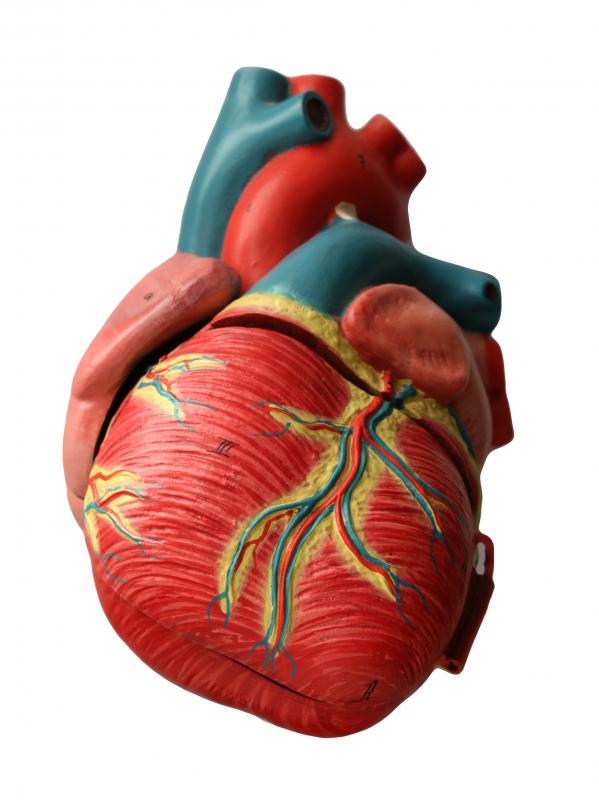At TheHealthBoard, we're committed to delivering accurate, trustworthy information. Our expert-authored content is rigorously fact-checked and sourced from credible authorities. Discover how we uphold the highest standards in providing you with reliable knowledge.
What is an Inotropic Effect?
When a drug, substance, or condition affects the contraction of a muscle, particularly the heart muscle, it is said to have an inotropic effect, and the substance that causes it is referred to as an inotropic agent. Inotropic agents either have a positive or negative effect.
The inotropic effect is usually most evident in drugs that affect the heart muscle. A drug that increases the strength of muscular contraction of the heart is said to have a positive effect, while one that weakens the force of the heart’s muscle contractions is said to have a negative effect.

When treating cardiovascular conditions, drugs that cause both positive and negative effects are used. The primary factor involved in what medication to use is the level of calcium that is in the muscle cell of the heart. Drugs that have a positive effect increase the level of calcium, and those that have a negative effect decrease the level. Not every drug used releases calcium, however, and not all drugs that do utilize calcium release it in equal amounts.

The positive inotropic agents are used for conditions in which the contraction of the muscle needs to be stimulated. Myocardial infarction (MI), commonly referred to as a heart attack, is probably the most common disease state where one would be used. Septic shock and cardiac shock, instances of disease where infection affects the muscle, are two other typical examples. The two most familiar substances used that fall under this category are calcium and digoxin. Catecholamines, such as epinephrine and norepinephrine, are also used fairly commonly, primarily in extreme cases such as cardiac shock.

Negative inotropic agents are for instances where the heart muscle needs to be relaxed or slowed, such as in cases of angina pectoris, commonly shortened to angina, which is a caused by a blockage of blood to the heart and causes severe chest pain and lack of oxygen. By using a drug that causes a negative inotropic effect, the heart can slow down and its workload is reduced. The disadvantage of this is that it can lead to heart failure if not monitored. Some beta blockers, which act as negative inotropic agents, have been found to reduce death and disease rates in congestive heart failure (CHF).

The inotropic effect usually refers to substances that affect the heart, but it can also refer to disease states. MI can cause dead heart tissue, which causes a negative effect. An enlarged heart muscle can cause a positive effect, due to the increased amount and strength of contraction.
AS FEATURED ON:
AS FEATURED ON:















Discussion Comments
@burcidi-- I'm not an expert but I know that my grandfather took inotropic drugs when his condition worsened, he was dealing with heart failure.
I'm not sure about all the conditions these drugs are given for but in my grandfather's situation, they had to get him on inotropes because he was just not responding to his medication anymore.
It was very easy because the drugs had to be given intravenously. He received the first several doses at the hospital but did the rest at home because he didn't want to stay at the hospital anymore. He had a catheter in his arm and he just injected the dose.
Since he knew how much to take and followed doctor's orders carefully, he didn't have any problems with side effects though.
From what I understand, drugs with inotropic effects are only used for more extreme cases right? So someone who just has high blood pressure wouldn't be given an inotropic drug because that might be too much? Does this mean that these are high risk drugs?
And how are these unotropic drugs administered? Is this something that can only take place at the hospital so that it can be monitored? Or can they be taken at home too?
I'm trying to learn more about inotropic drugs because my uncle, who is scheduled to have a heart stent surgery next month, might have to have inotropic therapy afterward. He's going to be staying with me after the surgery and I will help him until he's healthy enough to go back to his home. I just want to have an idea about what to expect during this phase.
Post your comments